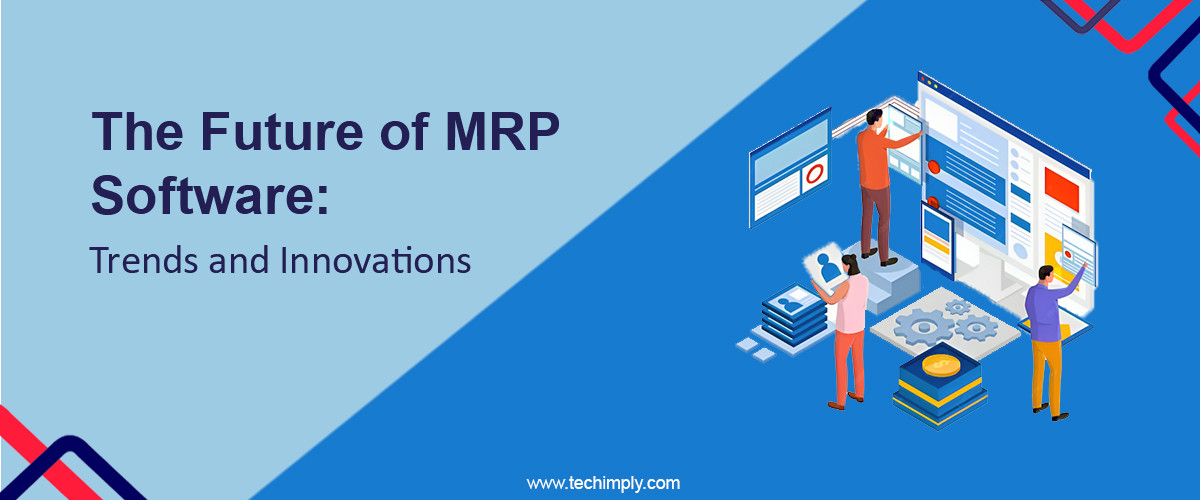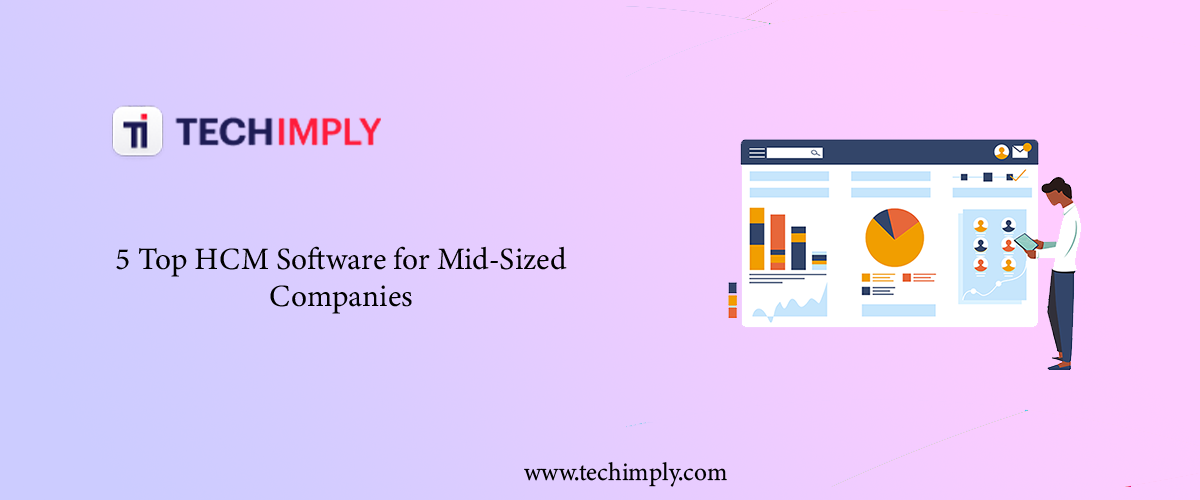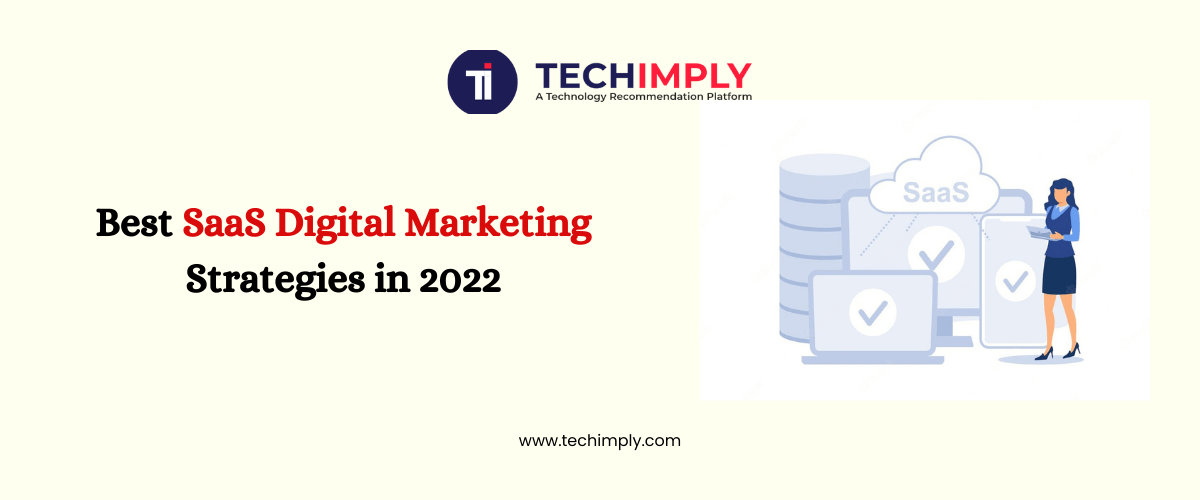Material Requirements Planning (MRP) software is designed to help businesses streamline their production processes and supply chains by managing the flow of raw materials needed for manufacture. Although MRP software has been around since the 1960s, technology will continue to advance at a rapid pace in the future. In this piece, we'll look at the most recent advancements in MRP software and how they could affect manufacturing going forward.
Trends 1: Technology and Industry 4.0: Internet of Things (IoT).
The evolution of MRP software is primarily driven by the use of Industry 4.0 concepts and the integration of IoT devices into production processes. The phrase "industry 4.0," sometimes known as the "Fourth Industrial Revolution," refers to the way that advanced technologies like automation, data analytics, and artificial intelligence are changing conventional industrial processes. The advent of IoT devices has made it possible for machinery and equipment to communicate with each other in real-time, producing valuable data that can be used to improve inventory control and production scheduling.
Trends 2 : Cloud-based software for MRP
Future trends also include the move to cloud-based MRP software solutions. This shows that instead of being installed on a local server, the software is hosted on a remote server and accessed online. Cloud-based MRP software has many benefits, such as increased scalability, flexibility, and affordability. Improved Inventory management software control and production scheduling are also made possible by the ability to share data and communicate in real time amongst departments within a company.
Scalability: Because cloud-based software can be scaled up or down as needed, it is ideal for businesses with fluctuating demand. Manufacturers can easily add or remove users and features as needed.
Flexibility: Because cloud-based software can be utilised from any location with an internet connection, it's ideal for manufacturing with many sites or remote workers. It also makes it possible for producers to collaborate virtually with partners and suppliers.
Cost-effectiveness: Compared to traditional on-premise software, cloud-based software typically has cheaper upfront costs because expensive gear does not need to be acquired or maintained. Small and medium-sized manufacturers might therefore find it more affordable
Trends 3 : Automatic updates
Manufacturers of cloud-based software don't need to worry about performing their own software maintenance because the supplier updates the Auto dealer accounting software. This ensures that the programme is continuously updated with the most recent features and security updates.
Combination: Cloud-based software can be easily integrated with other cloud-based programmes, such as CRM or financial software. Manufacturers may now combine many business operations into a seamless workflow thanks to this. The popularity and power of simple software package integration are expanding, and this trend is likely to continue at a quicker rate in the future.
Machine Instruction: Machine learning is the process of analysing large data sets and identifying trends by using statistical models and algorithms. This can be used in structural reforms to forecast material consumption and anticipate any potential disruptions in the supply chain based on historical data. By incorporating machine learning into MRP software, businesses may increase the precision and understanding of their production planning and inventory management decisions.
Applications for Mobile: Workers are no longer confined to their workstations in today's hectic workplace. As a result, many MRP software providers today offer mobile applications that let users access critical information and make decisions from anywhere at any time. These smartphone apps, which provide real-time data on production plans, inventory levels, and supply chain problems, can help businesses stay more easily on top of their operations.
Trend 4: MRP's use of AI
In the context of MRP, artificial intelligence (AI) is yet another revolutionary technology. AI enables better demand forecasting, better decision-making, and increased operational efficiency by analysing vast amounts of data, spotting patterns, and making predictions.
One of the best examples of this trend is Company Y. They have improved their production schedule, minimised waste, and optimised inventory levels by incorporating AI into their MRP system, which has led to a 20% boost in total operating efficiency.
Who Uses MRP Software?
Manufacturing companies utilise MRP (material requirements planning) software the most. It meets the needs of buying managers, production executives, inventory managers, and planners of production. These experts use MRP software to organise manufacturing processes, monitor inventory levels, streamline purchasing requirements, and enable effective planning. It is a vital tool in the fast-paced, fiercely competitive manufacturing sector that aids in streamlining operations and successfully meeting consumer needs.
While MRP software has been around for a while, there are exciting new advancements on the horizon that have the potential to drastically alter the way manufacturing businesses operate. Advancements in technology have enabled MRP software to become more intelligent and efficient, able to manage complex data analysis and decision-making processes. In this document, we will discuss some of the most significant advancements and trends in Retail POS software that will have an impact on manufacturing in the future.
One of the most popular trends in MRP software is the integration of ML (machine learning) and AI (artificial intelligence) technologies. These advancements allow MRP software to perform comprehensive data analysis, identify patterns, and render astute decisions based on current information. This improves the accuracy and efficiency of production planning while also assisting with inventory level optimization and demand prediction.
What Are The Major Features of MRP Software?
-
Production Planning: The intricacies of production planning involve the analysis of future market trends, examination of historical production loads, consideration of customer intent and budget forecasts, along with the identification of potential risks in the supply chain. MRP software amalgamates this historical data and forecasting statistics to devise an optimal production plan for a project.
-
Sales Order Fulfilment: This feature of Grocery Store POS system creates a platform for warehouse and manufacturing teams to assemble products and meet orders. It often includes modules for warehouse picking, packing, and shipping facilitation. It also helps in determining suitable warehouse layouts, appropriate packing materials, and ideal box sizes. The module might further offer shipping tools that guide in choosing the most efficient shipping method or selecting a shipping company that provides the best rates based on package weight and required delivery speed.
-
Inventory Management: MRP software aids in reducing warehouse overhead costs and provides a clearer understanding of stock movement across various areas of the supply chain. These inventory management tools can be found both as separate software or as part of the MRP systems. When incorporated within an MRP system, these tools enhance the ability to use data generated by the supply chain. These tools utilise data from manufacturing, project, and past sales to make more accurate inventory forecasts.
-
Warehouse Management: Similar to inventory management tools, warehouse management software embedded within MRP systems can streamline warehouse operations. These systems leverage data from multiple points along the supply chain to establish pricing and delivery predictions.
-
Supply Chain Management: Supply chain management software functions within MRP software oversee the transportation of materials to the production site. This software uses data from material and parts suppliers, enabling businesses to make informed decisions about manufacturing rates, pricing modifications, purchasing changes, and shipping costs.
-
Portfolio management: Manufacturing companies have to invest heavily in research and development of new products to stay competitive. Project and portfolio management features within MRP software offer a place for companies to build and track the progress of new manufacturing projects. These tools include everyday project management features like tasks, due dates, and progress reports. They also connect with materials and manufacturing organisational tools such as materials pricing, supply chain data, and factory timetables.
-
CPQ and invoicing: Pricing, and Quotation (CPQ) software is a pivotal aspect of modern MRP systems, managing the intricate rules and restrictions pertinent to highly customizable products. When integrated with invoicing tools within an MRP, CPQ can dramatically streamline the sales process for manufacturing companies by simplifying the quotation procedure.
-
Management: Another essential facet of MRP software is the inclusion of Customer Relationship Management (CRM) tools. These tools utilise supplier, customer, and shipping data to enhance supply chain efficiency. The location data for suppliers obtained via these tools can aid in organising backup supplies, sourcing warehousing for surplus inventory, or executing sales within a specific region.
-
Analytics: Integrated analytics tools in MRP software present complex data sets through a clear, visualised lens. These tools generate reports that highlight historical trends and identify Cheque printing software potential supply chain bottlenecks. Certain MRP systems also enable companies to establish alerts for custom notifications, such as when supplies fall below a predetermined level or when shipping times exceed an established threshold.
Conclusion
The future of MRP software will see further changes as technology develops. Businesses across numerous industries will be significantly impacted by exciting new trends and advances in MRP software. Advancements in technology have rendered MRP software more efficient, comprehensible, and customisable to meet the distinct needs of individual companies. Companies that offer cutting-edge MRP software solutions, such as Techimply, are setting the bar by optimising processes and offering analytical data and analytics to support decision-making. The following years are expected to witness a substantial increase in the requirement for MRP software, as businesses continue to prioritise automation, data-driven processes, and real-time information. This is a unique opportunity for companies such as Techimply to further develop and enhance their goods to meet evolving market demands.



.jpg)


